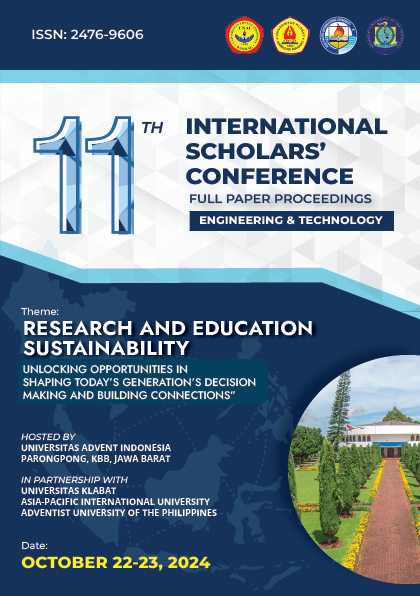Assessing the Level of Crime Incidence in the Municipality of Silang Cavite Using Monte Carlo Algorithm
Keywords:
Crime Incidence, Desktop Application, AlgorithmAbstract
Silang Cavite is one of the 24 local government units of the province of Cavite, Philippines. It is subdivided into 64 barangays, and it relies on agriculture as its principal source of income. Based on the record of the Cavite government in 2020, Silang got the highest crime index in the 5th district of Cavite. In response to this pressing issue, the researcher came up with the idea to develop a system that can assess the crime incidence in the municipality of Silang using the Monte Carlo algorithm. The system was developed with the aid of the Systems Development Cycle (SDLC) model. The crime incidence was presented using Google Maps and Bing satellites. Descriptive and developmental research methods were used in conducting the study. As part of the developmental method, the acceptability of the system was tested using the formulated questionnaire using the ISO/IEC 25010:2011 standard. The acceptability of the system was evaluated by 38 participants. Purposive sampling was used in the selection of the participants. The system underwent rigorous evaluation according to the ISO/IEC 25010:2011 standard, which outlines eight characteristics for assessing software quality. Based on these criteria, the system was rated as “Excellent” or “Very Acceptable,” indicating that it meets high standards of performance, reliability, and user satisfaction. This evaluation underscores the system’s effectiveness in addressing the crime assessment needs of Silang, contributing to improved public safety and informed decision-making in the Municipality.
Downloads
References
PhilGIS. (2019). Cavite. Retrieved from http://philgis.org/province-page/cavite
DILG. (2019). Cavite provincial office. Retrieved from http://calabarzon.dilg.gov.ph/cavite
Loyola, R. (2019). Silang Cavite. Retrieved from http://silangcavite.yolasite.com/
Cavite.gov.ph. (2020). Cavite ecological profile. Retrieved from
https://cavite.gov.ph/home/wp-content/uploads/2022/02/cep2020/CEP2020_CHAPTER03F_PUBLICORDERANDSAFE
TY.pdf
Techopedia. (2019). Monte Carlo algorithm. Retrieved from
https://www.techopedia.com/definition/20832/monte-carlo-algorithm
Hays, J. (2015). Crime in the Philippines. Facts and Details.
http://factsanddetails.com/southeast-asia/Philippines/sub5_6f/entry-3908.html
Philstar. (2019, February 26). PNP: Total crime volume down in 2018. Philstar.
https://www.philstar.com/nation/2019/02/26/1896714/pnp-total-crime-volume-down-
#XmgY4giqrF1FxtCA.99
Guru99. (2019). SDLC (Software development life cycle) tutorial: What is, phases, model.
Guru99. https://www.guru99.com/software-development-life-cycle-tutorial.html
Kiani, R., Mahdavi, S., & Keshavarzi, A. (2015). Analysis and prediction of crimes by
clustering and classification. Analysis, 4(8). https://doi.org/10.14569/IJARAI.2015.040802
FreeAdvise. (2019). What is a crime? FreeAdvise. https://criminallaw.
freeadvice.com/criminal-law/criminal-law/crime_law.htm
Collins. (2019). Definition of 'crime'. Collins Dictionary.
https://www.collinsdictionary.com/dictionary/english/crime
Rubio, A. J. M., Ballera, M. A., & Gonzales, D. B. (2018). Identifying crime hotspots in CAMANAVA by geographic information system using spatio-temporal analysis. Asia Pacific Journal of Multidisciplinary Research, 6(3), 101-110. https://www.apjmr.com/wpcontent/
uploads/2018/07/APJMR-2018.6.3.11a.pdf
Pawale, P., Bagal, S., Ajabe, S., & Shikalaga, K. (2017). Geo-statistical approach for crime hotspot detection and prediction. International Research Journal of Engineering and Technology (IRJET). https://www.irjet.net/archives/V4/i5/IRJET-V4I5684.pdf
Araújo, A., Cacho, N., Bezerra, L., Vieira, C., & Borges, J. (2018). Towards a crime hotspot detection framework for patrol planning. In Proceedings of the 2018 IEEE 20th International Conference on High Performance Computing and Communications; IEEE 16th International Conference on Smart City; IEEE 4th International Conference on Data
Science and Systems (HPCC/SmartCity/DSS) (pp. 1256-1263). IEEE. https://doi.org/10.1109/HPCC/SmartCity/DSS.2018.00211
Zou, B., Mohammed, N., Chengzhang, Z., & Rongchang, Z. (2017). Crime hotspot detection and monitoring using video-based event modeling and mapping. International Journal of Computer and Information Science, 10(1), 64-78. https://doi.org/10.2991/ijcis.2017.10.1.64
Ludwig, A., & Marshal, M. (2015). Using crime data in academic research: Issues of comparability and integrity. Records Management Journal. https://doi.org/10.1108/RMJ-05-2015-0017
Donohue, J. J., Aneja, A., & Webr, K. D. (2019). Right-to-carry laws and violent crime: A comprehensive assessment using panel data and a state-level synthetic control analysis.
Journal of Empirical Legal Studies, 16(2), 198-247. https://doi.org/10.1111/jels.12219
Seepersad, R. (2016). Crime and violence in Trinidad and Tobago. Institutions for Development and Country Department Caribbean Group. https://doi.org/10.18235/0009297
Pease, C. (2018). An overview of Monte Carlo methods. Towards Data Science. https://towardsdatascience.com/an-overview-of-monte-carlo-methods-675384eb1694
Palisade. (2019). Monte Carlo simulation. Palisade. https://www.palisade.com/risk/monte_carlo_simulation.asp
Dinca, F., Thiele, L., & Akdeniz, B. C. (2019). The effective geometry Monte Carlo algorithm: Applications to molecular communication. Physics Letters A, 383(23), 2508-2514. https://doi.org/10.1016/j.physleta.2019.05.029
Eftelioglu, E., Tang, X., & Shekhar, S. (2016). Crime hotspot detection: A computational perspective. Department of Computer Science and Engineering, University of Minnesota. https://doi.org/10.4018/978-1-5225-0463-4.ch004
Wang, Z., & Liu, X. (2017). Analysis of burglary hot spots and near-repeat victimization in a large Chinese city. International Journal of Geo-Information, 6(5), 148.
https://doi.org/10.3390/ijgi6050148
Barga, R., Smith, J., & Johnson, M. (2019). Hot spots policing of small geographic areas: Effects on crime. https://doi.org/10.1002/cl2.1046
Downloads
Published
How to Cite
Issue
Section
License
Copyright (c) 2024 11th International Scholars Conference

This work is licensed under a Creative Commons Attribution-ShareAlike 4.0 International License.
Copyright © 2024 ISC Committee.















